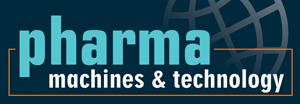Control of Genotoxic and Elemental Impurities
Potential sources of elemental impurities
Elemental impurities that are unintentionally added and are potentially present in the drug substance, water or excipients used in the preparation of the drug product. Elemental impurities that are potentially introduced into the drug substance and / or drug product from manufacturing equipment.
Risk assessment approaches
Here are examples of general approaches that may be considered during elemental impurities risk assessment. These approaches or others may change as information becomes available or additional experience is gained.
Assessment of potential elemental impurities in the drug product: Determine or assess the levels of elemental impurities in the final drug product. Depending on the formulation type, an evaluation from the container closure system may also be required.
Assessment of potential elemental impurities from each component of the drug product (API, excipients, container closure system): Assess each component for potential sources of elemental impurities; identify known or likely elemental impurities; and determine the contribution of each component or source of elemental impurity to the levels in the final drug product.
Examples of potential outputs of the risk assessment
Elemental impurities excluded from the risk assessment (see Q3D: Table 5.1): Class 2B elements that are not intentionally added. Elements in Table 5.1 that may be excluded based on the route of administration.
Example: For a solid oral drug product, the following class 3 elemental impurities were not intentionally added and therefore were not considered in the risk assessment: Li, Sb, Ba, Mo, Cu, Sn, and Cr.
Elemental impurities that may be present below the control threshold in the drug product: Elemental impurities in this category would be those that have the potential to be found, but if present would be found at low levels.
They are often associated as low level impurities in components that can be handled through incoming material controls or with GMP Quality System elements (e.g. vendor/supplier qualification processes and procedures).
Example: Pb is a potential impurity in TiO2. If the formulation contained 10 mg TiO2 in a 1 g tablet (1% TiO2) and the observed Pb level in TiO2 was 1-10 µg/g; the total amount of Pb contribution to the drug product would be (0.01-0.1 µg/day), less than the control threshold of Pb (1.5 µg/g) in the drug product.
Elemental impurities that may exceed the control threshold but are below the PDE in the drug product: Elemental impurities in this category would be those that have the potential to be found in the drug product or in drug product components.
Example: Pb is a potential impurity in K2CO3. If the formulation contained 500 mg K2CO3 in a 1 g tablet and the observed Pb level in K2CO3 was 1-8 µg/g, the total amount of Pb contribution to the drug product would be 0.5-4 ppm. The range of observed levels is above the control threshold but below the PDE (5 µg/g).
Elemental impurities that may exceed the PDE in the drug product: Elemental impurities in this category would be those that exceed the PDE in the drug product.
Example: Cd is a potential impurity in CaHPO4. If the formulation contained 500 mg CaHPO4 in a 750 mg tablet and the observed Cd level in Ca2HPO4 was 8-9 µg/g, the total amount of Cd contribution to the drug product (5.3 – 6 µg) would exceed the PDE for Cd 5 (µg/day).
Comparison of Observed Levels with PDE
The elemental impurity level is <30% of the PDE. If this is the case, then no additional controls are deemed necessary.
The elemental impurity level in the drug product is greater than the control threshold but does not exceed the PDE; additional measures may be implemented to insure that the level does not exceed the PDE.
If the elemental impurity level exceeds the PDE , additional measures should be considered to ensure the levels do not exceed the PDE.
When additional measures are either not feasible or unsuccessful, levels of elemental impurities higher than the established PDE may be justified in certain circumstances.
The safety impact of the elemental impurity level should be evaluated as described in Q3D. It should be noted that if an acceptable level (AL) is the level forming the basis of the comparison, the final acceptance of the proposed limit is dependent on approval by the appropriate regulatory authority. Module 1 contains additional information on the establishment of ALs.
